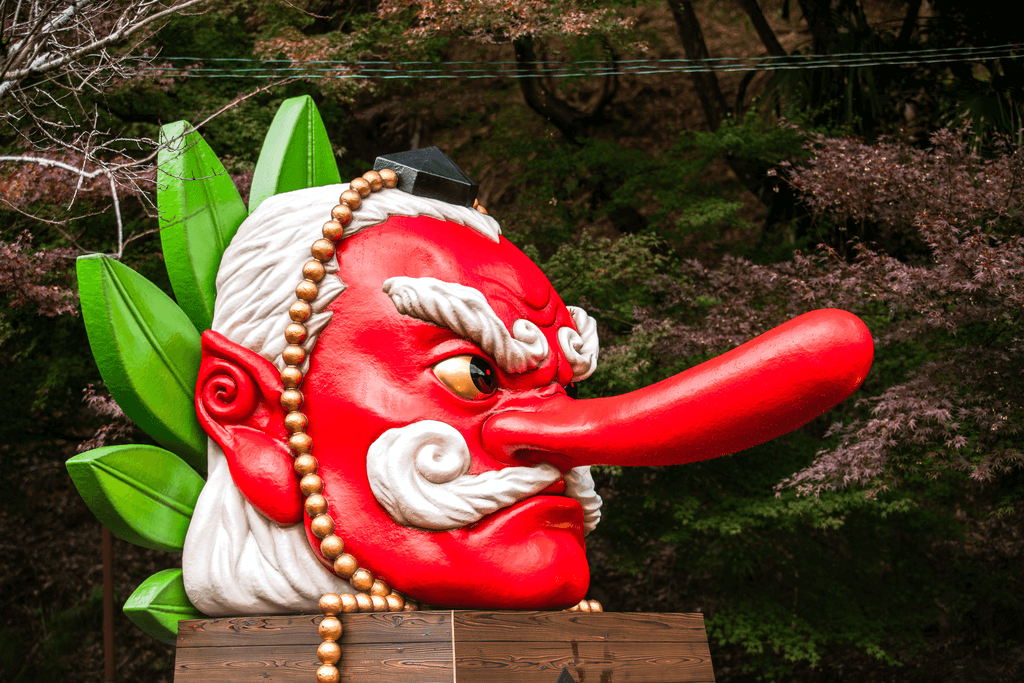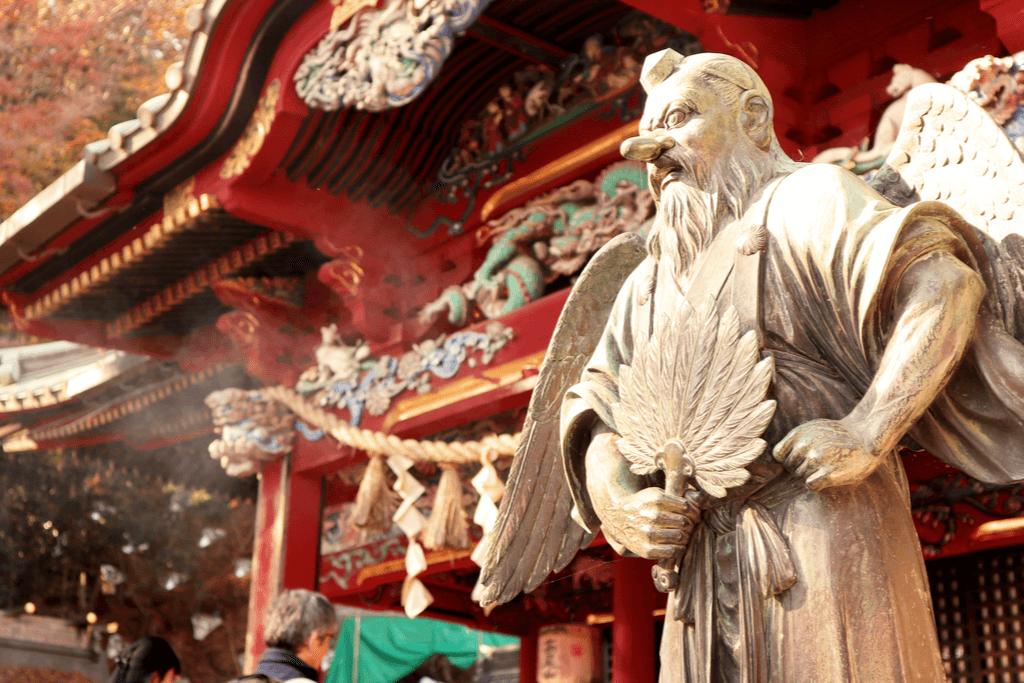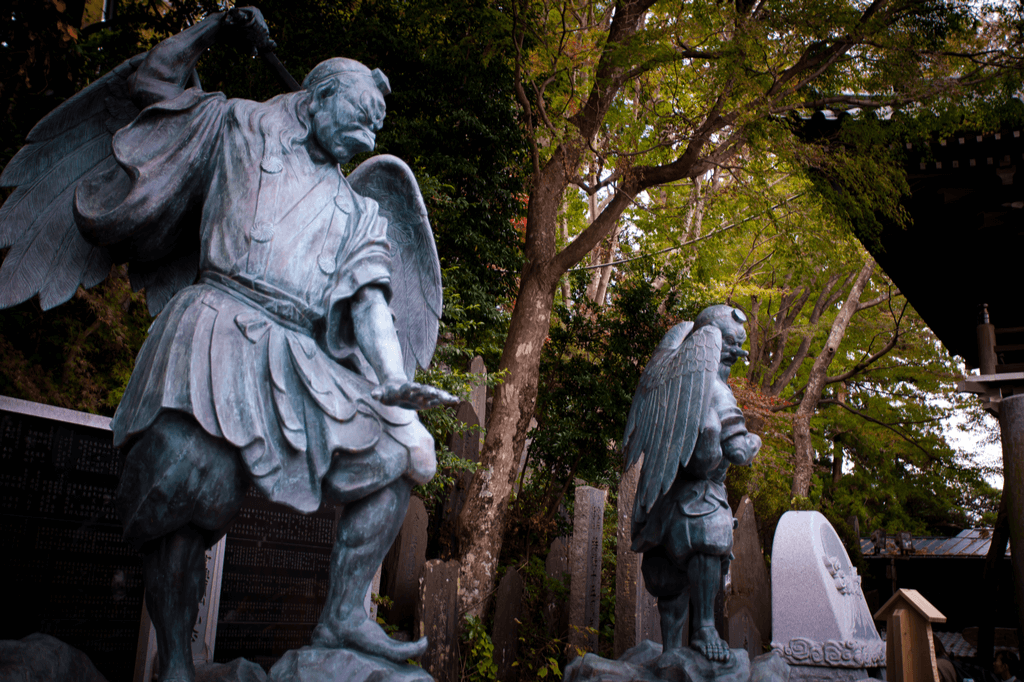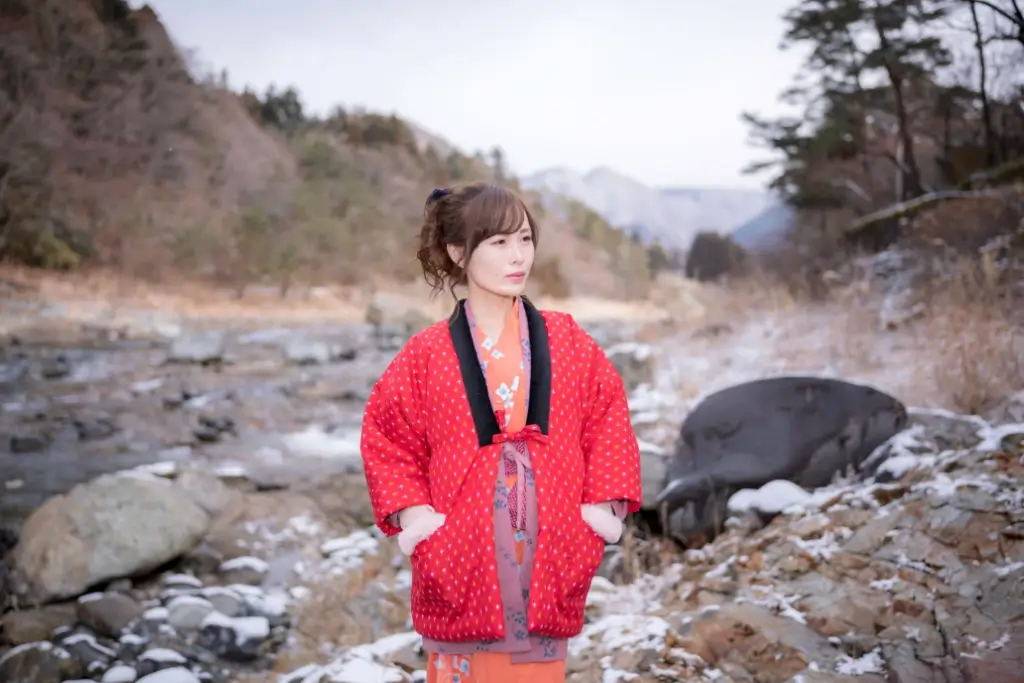culture
Japanese Tengu: Are They Evil Yokai or Sacred Beings?
Linh Le
Posted on May 27, 2022
Share:

Have you ever seen a character in a Japanese souvenir shop with a red, angry face and a long nose? It’s one of Japanese culture’s most sacred mythical creatures—the tengu. Let’s explore the ancient world of Japanese mythology and understand why this strange creature holds significance in the spiritual life of the Japanese.
The Origin of Japanese Tengu
Since ancient times, many legends surround the tengu, and its true origin remains a mystery. The creature is believed to have roots in a Chinese folktale introduced to Japan. The name “tengu” is derived from Tiangou, a mountain-dwelling yokai with a dog-like appearance. Tiangou, often associated with a meteorite, fell from the sky like a shooting star, accompanied by a rumbling sound. This creature is linked to the concept of the Black Dog or the meteorite causing eclipses.
According to Kujiki – an ancient Japanese historical text, Amanozako (the goddess who gave birth to the Storm God Susanoo) is the forerunner of tengu. In Buddhism, the legend of tengu is related to Garuda, the Hindu deity resembling a bird of prey.
Are there any additional legends about tengu?
Some people even rumored that tengu was an old Westerner shipwrecked and drifted into the waters of Japan. This is because they have large bodies, white skin, high noses, and red faces from sun exposure and often live in the mountains and forests. Therefore, when local people encountered them, they created stories about tengu.

Tengu are also known as Japanese ghosts imprisoned in the underworld. They are the souls of Buddhists who can’t go to hell, but because of the karma they created, they also can’t go to heaven. There are different types of tengu in Japanese folklore as well. Additionally, those who died with power will become daitengu – a species with high intellectual ability; and the poor will become kotengu – the weaker species humans can easily deceive. The tengu’s origin causes people to debate and speculate. However, this creature has many nuances intertwined between historical reality, fantasy, and mystery elements.
Want to experience Japanese culture without having to make the trip to Japan? You’ll like what Sakuraco has to offer! Sakuraco delivers traditional Japanese sweets, snacks, and tableware from across Japan to your door monthly so you can have an authentic Japanese experience at your convenience!
The Japanese Tengu’s Strange Appearance
Tengu’s alternate name is “heavenly dog” because of its original form as a hybrid between humans and dogs that came to earth from a fire meteorite. Over time, they evolved into a bird-human hybrid with a beak-like nose, wings, feathers, and sharp claws. The avian characteristics also include a bird-like way of life, spawning from large eggs that nest in old trees. It seems that female tengu have never been mentioned and are primarily depicted in male form.

The human-like tengu will disguise themselves as Yamabushi, ascetic monks often living in the rugged mountains. They wear small black hats and robes, carry a staff, wear high clogs, and hold a fan made of feathers or leaves called hauchiwa that can change the length of their noses and control the weather.
The ancient image of the tengu is similar to a bird of prey with a large beak in the middle of its face. However, by the 14th century, the beak transformed into a long, prominent nose on a red face and a large body with wings on the back. This strange appearance, which has endured to this day, is decorated on masks and statues in Japanese Shinto shrines.
Tengu’s Powers
Thanks to its avian shape and large wings on its back, tengu can fly and move very fast. In addition, the tengu is a master of transformation, and they often use this ability to tease and deceive people. However, unlike other yokai, tengu rarely harm humans, like the kitsune (fox) or tanuki (raccoon dog).
On top of that, their power lies in other extraordinary skills, such as magic, done through chanting with its magic feather fan. Regarding fighting ability, tengu were proficient in martial arts. Additionally, they taught martial arts to ninja, samurai, and swordsmen. When facing humans, tengu’s telepathic abilities also allow them to communicate without opening their mouths. They can also manipulate and read humans’ minds.
Tengu in Japanese Belief
In the folklore and beliefs of Japan, tengu are strange creatures, symbolizing the two opposite sides of life, good and evil, or gods and yokai. The true nature of tengu is difficult to distinguish, good or bad and is probably all about concepts and stories.

Since ancient times, Buddhism has regarded tengu as a demon that causes trouble and portends war. They often kidnap, harm, or even kill monks and nuns. However, as time went by, this idea gradually changed. The image of the tengu became the guardian spirit for monks in the mountains, with past events being the inherent mischievousness of tengu.
In Japanese culture, tengu are also yokai due to their aggressive and arrogant personality. People would blame tengu for the disappearance of those missing or lost at the time. However, individuals kidnapped by tengu would usually return to a location far away from where they were captured, with no memory of the event.
According to the old legend, tengu only punishes people when they encroach on the territory, forest, or nature they protect. Those who violate or insult them will receive a terrible punishment that causes the whole nation to live in misery. That’s why humans fear and respect this creature. Nowadays, shrines often have tengu statues to convey the locals’ desire to live in a peaceful land. What do you think? Is the tengu a sacred being or a scary demon? Share your ideas in the comment below!

Discover authentic flavors with Sakuraco
Get Sakuraco 

Discover authentic flavors with Sakuraco
Get Sakuraco 
Related Articles

Hotels in Japan: Best Ones to Visit!
Japan is packed with hotels that promise unforgettable experiences, blending world-class service, jaw-dropping views, rich history, and a dash of the country’s unique traditional flair!

Hanten: The Ultimate Winter Coat from Japan!
Hanten, offer practicality and are symbols of traditional Japanese fashion, alongside the famous kimono. Join us as we explore hanten and some other beloved Japanese winter jackets!

What is a Japanese Wedding Like? A Look Into Shinto Rituals
A Japanese wedding is a beautiful example of how the country combines ancient rituals with modern influences. A traditional ceremony often revolves around Shinto practices, symbolizing purity, harmony, and good fortune. But, over time, couples in this country have also embraced Western weddings.

Japanese Calendar: What Are Microseasons?
The Japanese calendar includes many beautiful events, some popular globally and others less known. Kō (microseasons) were once celebrated but replaced by Western seasons



